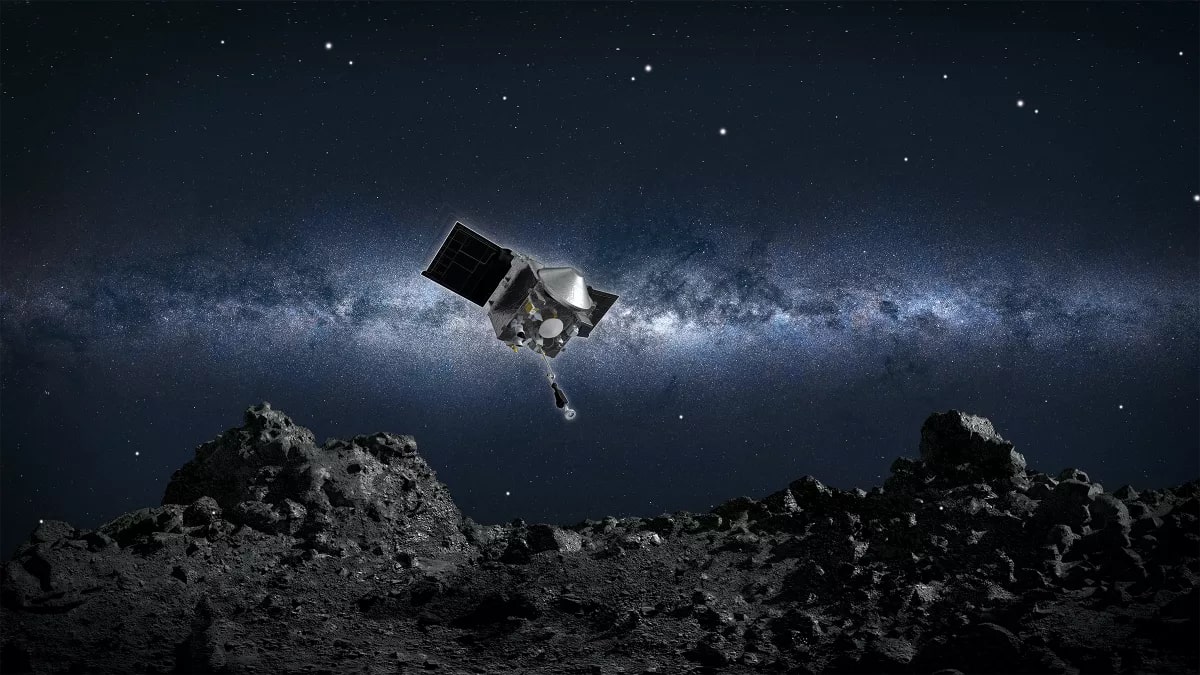NASA’s plan to fly a spacecraft along a potentially dangerous asteroid in 2029 will continue at least next year.
Following threats to cancel the mission, the OSIRIS-APEX spacecraft received a last-minute allocation of $20 million in the House budget to continue basic operations next year. However, the fate of 18 other NASA missions scheduled to cease operations on October 1st remains uncertain as the government shutdown continues.
OSIRIS-APEX stands for “Origins, Spectral Interpretation, Resource Identification, and Security—Apophis Explorer.” The mission will observe the 1,300-foot (400-meter) wide asteroid Apophis, which was once thought to pose a minor threat to Earth during a close encounter in 2029.
Fortunately, further observations showed that Apophis (named after an ancient Egyptian god associated with chaos) would instead fly safely around Earth. But it will be very close. Its orbit could put it within the orbit of a geostationary satellite about 22,000 miles (36,000 kilometers) away, making it visible to the naked eye. However, because Apophis regularly crosses Earth’s path, there is still a risk of direct impacts far into the future.

“Apophis is one of the most fascinating near-Earth asteroids ever discovered,” DeLaJustina said. “Studying Apophis during and after its encounter with Earth provides a unique opportunity to understand how small bodies are deformed by the planet’s close approach, from seismic shaking and surface landslides to changes in rotation and orbit.”
Nevertheless, in May, the Trump administration added OSIRIS-APEX to the list of 19 missions NASA plans to cancel as part of sweeping cuts that slashed NASA’s budget by nearly 25%, from $24.8 billion to $18.8 billion. The fate of the other 18 missions remains uncertain. The U.S. government has been shut down since October 1 after lawmakers in Washington, D.C., were unable to agree on a budget for this year.
Although OSIRIS-APEX’s 2026-2027 operations are safe, Congress requires an annual review of NASA’s funding. This means the mission, like other NASA projects, will be reconsidered for funding next year.
DelaJustina said she hopes the funding will continue. He said the mission was “explicitly named” in the House and Senate versions of the 2026 NASA budget thanks to the support of Arizona’s Congressional delegation, particularly Sen. Mark Kelly (D), a former NASA astronaut, and Rep. Juan Siscomani (R), an alumnus of the University of Arizona (the leading institution and leader of OSIRIS-APEX). Osiris Rex).
“Congress recognized the value of keeping a healthy spacecraft and equipment operational as we sail toward Apophis,” DeLaJustina said. “While it does not guarantee future funding, it moves us forward and gives us a fighting chance to execute this once-in-a-lifetime encounter.”
Future science in crisis
The funding has been a relief for the team, but it’s not all good news. This year, the scientific team has received no active research funding. This means that early researchers, such as mission managers and the students they supervise, cannot analyze, plan, or do mission science.
“It’s unfortunate that we have to take a break from participating for more than a year,” Della Justina said. In 2022, NASA’s final senior review of the mission, a community effort conducted approximately every three years to assess the merits of scientific research, clearly states that mentoring within teams is beneficial to the space community.
“This long-term mission presented an effective professional development plan that transitioned young scientists into more senior roles as the mission progressed,” the senior review said, adding that most of OSIRIS-APEX’s senior leadership, including DellaGiustina herself, were promoted from previous junior roles at OSIRIS-REx.
Meanwhile, the two missions continue to publish scientific papers every year. Their scientific productivity was praised by the senior review team, which flagged at least 137 papers in 2022 that “reveal important discoveries and insights into the structure and evolution of small asteroids.”
A number of other papers have been published in the past three years, and more papers on Bennu’s composition and origin will be published soon, DeLaJustina said. Remarkably, a Nature paper in January showed that Bennu’s host body had a type of brine flowing through it that contained carbonates, the building blocks of life. “The mother body may have resembled an oceanic world,” DellaJustina said.
Source link

